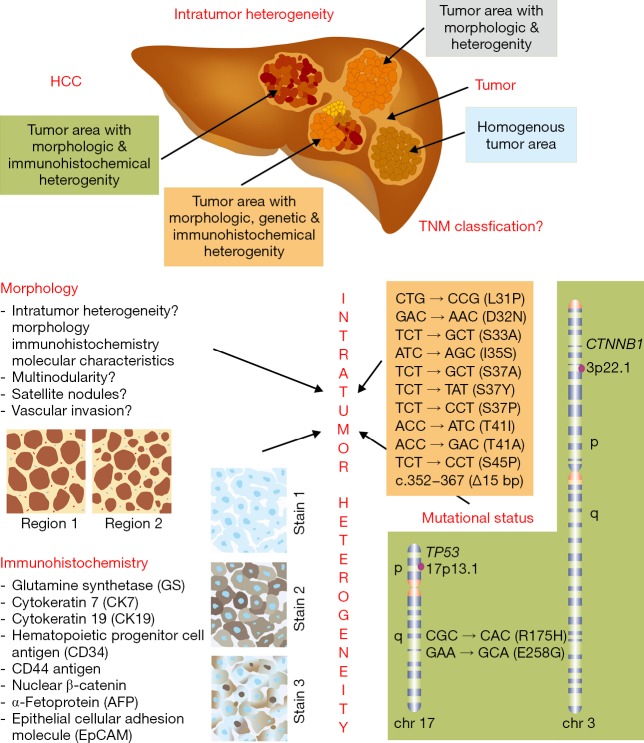Figure 1.
Intratumor heterogeneity. (A) Friemel and coworkers analysed 23 HCC patients without medical pretreatment. In most cases (n=20), intratumor heterogeneity was observed solely on the level of morphology (n=6), on the level of morphology combined with immunohistochemical heterogeneity (n=9), and heterogeneity in regard to morphology, immunohistochemistry and mutational status of the tumor suppressor p53 (TP53) and β-catenin (CTNNB1) (n=5). Only three tumors were phenotypically homogenous, meaning that there was no morphological or immunohistochemical variation observed. The authors concluded that this intratumor heterogeneity is a challenge for the establishment of a robust HCC classification and a critical factor that contributes to treatment failure and the development of drug resistance; (B) the analyzed morphological characteristics, immunohistochemical parameters as well as the detected TP53 and CTNNB1 gene mutations are depicted. More details on this study are given elsewhere (5). HCC, hepatocellular carcinoma.

